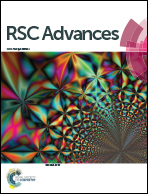Degradation of formaldehyde aqueous solution by Bi based catalyst and its activity evaluation
Abstract
Bi based catalysts have attracted continuous attention from the scientific community because of their excellent photochemical properties and wide application in photocatalytic treatment of environmental pollution. A series of Bi based catalysts with good crystallinity and high purity were prepared by calcination and hydrothermal synthesis. In the application of degrading formaldehyde aqueous solution in a mercury lamp and xenon lamp atmosphere, it was found that BiVO4 and Bi2WO6 showed excellent photochemical properties under ultraviolet and visible light. The tests of PL, UV-Vis and EIS confirmed their high activity. In the calculation based on density functional theory (DFT), through the analysis of the energy band structure, density of states (DOS) and partial wave density of states (PDOS), it is found that the d orbital of V and W elements has a great influence on the position and size of the energy band of the catalyst, which makes it have high activity and excellent electrochemical properties.



 Please wait while we load your content...
Please wait while we load your content...